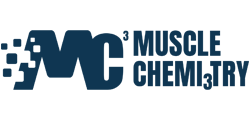Traditionally, muscle and women haven’t gone together. The overriding view has been that muscle will make a woman look manly, less athletic, and less feminine. Thankfully, we are entering into a more enlightened age. Millions of ladies around the world have discovered the truth about what eating and exercising to add muscle to their physique can do for them. Building muscle can help women:
- Improve their figure
- Eliminate body fat
- Improve aesthetics
- Boost strength, self-confidence, and inner conviction
As a personal trainer, I’ve spent 35+ years introducing women to the benefits of muscle training and working with them to get serious about weight training and nutrition to create a toned, athletic, muscular body.
In this article, I lay out a complete beginner’s guide to female muscle growth.
Taking Stock
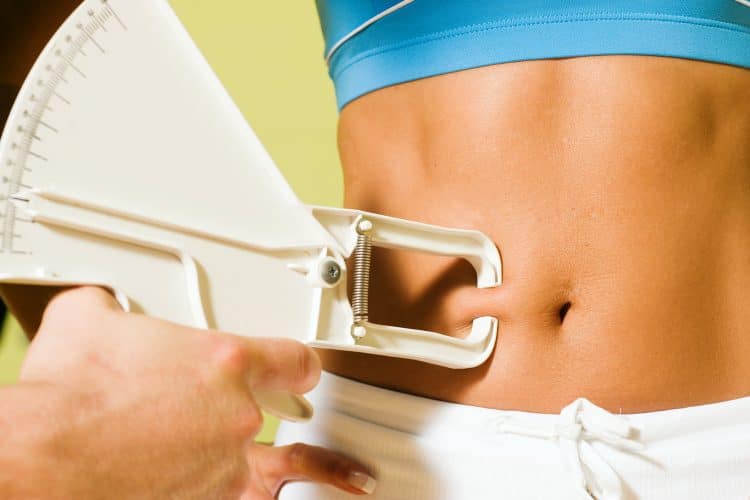
When you start on a journey, you need a roadmap. It’s the same thing with building muscle. That roadmap begins with an assessment of where you are starting from. To find that out, you need to take some vital statistics.
Take the following body measurements:
To do this, you’ll need a smart scale. You can pick up a good one for around $80. These scales pair to a phone app to provide you with important data, including your lean body mass and body fat percentage.
To take your body measurements, you will need a tape measure.
Measure the following body parts:
- Upper arm (flexed)
- Chest
- Stomach (around the belly button)
- Hips
- Mid Thigh
Take these body measurements once every week to assess your progress. Be aware, though, that you will be reshaping your body by both losing fat and adding muscle. Because muscle is heavier than fat, you may not lose as much weight on the scale as expected. The key parameters to focus on are your body fat percentage and lean body mass.
How Should Women Train?
The idea that women are delicate beings persists. As the saying goes, they are the weaker sex – the rose to the man’s thorn. Men are meant to be the strong ones. It may be sexist and stereotypical, but it’s still stuck in our collective mindset.
That’s why you can still walk into any gym and see the racks of heavy iron on one side, all dark and imposing – and then the tiny, cute pink dumbbells on the other. That’s the women’s side. Well, it’s time to blast the notion that men and women, with the same goal, need to train differently out of the water once and for all.
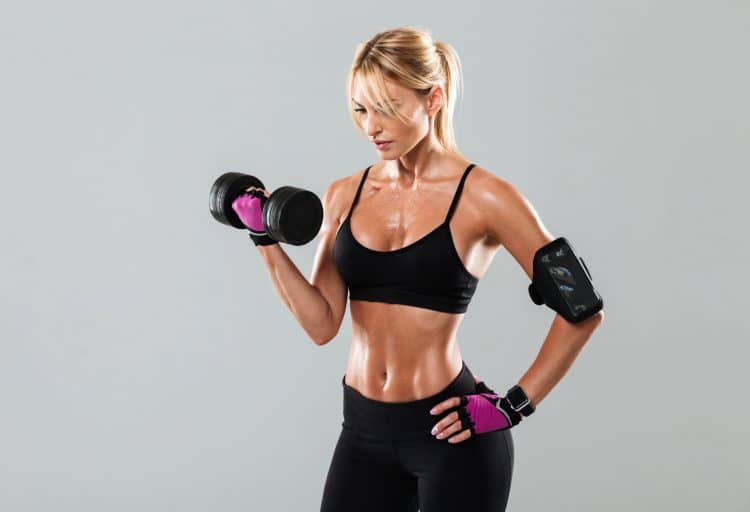
Muscle is Muscle
Women do not need to train differently than men to build muscle. Until one of us – men or women – starts restructuring our cell’s molecular composition or growing new types of muscle fiber, we all need to train in the same manner. You see, whether a muscle belongs to a man or a woman, it will react to stress in the same way. It will need the same type of stimulus to grow, the same form of fuel to repair itself, and an identical amount of rest to recuperate. So, fundamentally men and women should train the same.
Differing Goals
Weights are a tool. What we want to achieve from the tool will dictate how we use it. Some female weight trainers desire muscular size and strength gains, while others are after a toned, shapely look. Those goals require different workout plans.
For size and strength, you’ll train super heavy with lots of sets to failure and relatively low reps. Those more intent on defining and shaping the muscle should perform sets in the 8-30 rep range and include isolation exercises. Notice, though, that it is the goal and not the gender that determines the nature of the weight training. After all, there are many women out there who do desire larger, stronger muscles. These women will train just like men to achieve their goals.
Meet Your Muscles
The first step toward adding lean muscle mass to your body is to become aware of the different muscles that make up your amazing body.
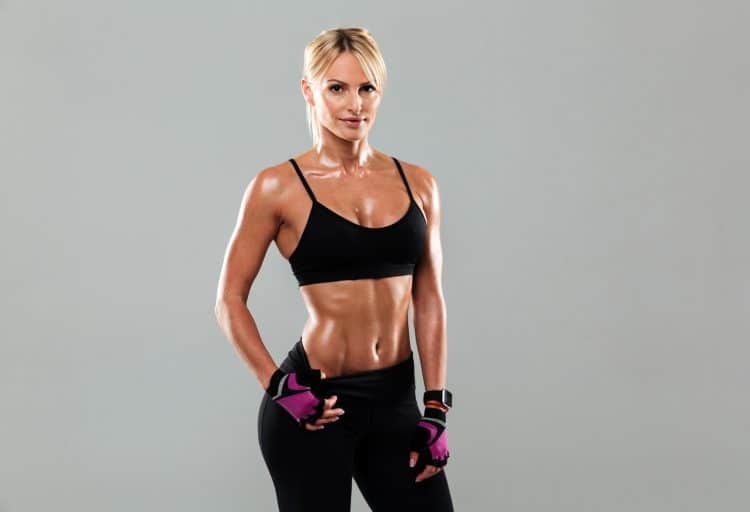
Here’s an overview:
Shoulders
The shoulders consist of three muscles — the front, side, and rear deltoids. The shoulders pull the humerus (upper arm bone) out to the side (middle delt), out to the front (front delt), and behind the body (rear delt). Here are shoulder workouts for designed for women.
Chest
There are two parts to your chest muscles — the pectoralis major and minor. The pec major sits on top of the pec minor. The main job of the chest is to push your arms away from your body and towards its center line.
Trapezius
The trapezius, or traps, is a kite-shaped muscle that covers the area from your neck to the mid-spine. It allows the scapular bones to move up and down and in and out.
Latissimus Dorsi
The latissimus dorsi (or lats) is a large muscle that originates at the ribs and inserts at the top of the humerus. Well-developed lats give a pleasing ‘V’ shape to the torso.
Erector Spinae
The erector spinae are the muscles at the base of the spine. They run all the way from the pelvis up to the neck. Its main job is to extend or pull back the spine.
Biceps
The biceps are a two-headed muscle. Their main function is to flex the elbow, bringing the wrist up towards the shoulder. They also assist in wrist supination. Here are three arm workouts specifically designed for women.
Triceps
The triceps, at the back of your upper arm, is a three-headed muscle group. All three heads originate at the shoulder joint and insert on the elbow. The job of the triceps is to straighten the arm through elbow flexion. It is the antagonist (opposite) muscle to the biceps.
Abdominals
The abdominals are a flat muscle band covering the lower front torso. These muscles allow for flexion of the torso, bringing the chest toward the knees.
Quadriceps
The quadriceps comprises four heads, which run from the hip/pelvis to the knee. These muscles combine to perform flexion and extension of the knee, as well as lateral and medial rotation.
Calves
Two muscles make up the calves — the gastrocnemius, which flexes the ankle, and the soleus, which assists in that ankle flexion.
Glutes
There are three parts to your glute (butt) muscles — the gluteus maximus, gluteus medius and gluteus minimus. These muscles combine to allow for hip extension, abduction, and rotation. Additionally, here are three glute workouts specifically tailored for women.
Hamstrings
The hamstrings are sometimes known as the leg biceps. That’s because they do the same job as the biceps, which is to flex and extend the limb’s joint — in this case, the knee. It is the antagonistic muscle group to the quadriceps.
How to Get More Out of Your Muscle Growth Workouts
Building muscle is hard work, and it’s even harder for women than it is for men. That’s because they have less testosterone coursing through their veins. If you want to be successful, you need to be totally locked in when you are on the gym floor. Here are five training tips to help you optimize your workouts:
1. Get Rid of Distractions

When you are in the gym, you need to be in the moment with what you are doing. Every distraction needs to be eliminated so that you can focus like a laser beam on the movement that your body is undergoing.
That means the gym is not a place for your smartphone, social chit-chat, or daydreaming about what you’ll do on the weekend. Leave that to the wannabes who will be spinning their wheels for the next five years.
You also have to turn off the negative voice inside your head that is constantly telling you that you can’t do what you intend to do. We all have that voice. It’s the ones of us who can quash it who are the ones who make real gains. When you can override the voice that tells you to bail out of a set because you could be late for the next appointment or overtrain, you can push your set to the required limit.
2. Two Key Body Position Changes
The positioning of your elbows and your sternum is something that most weight trainers don’t really think about. However, they are vital to optimal performance. Rather than starting a lift with rounded shoulders, think about pulling your shoulders back and extending the chest. You can do this by pulling the shoulder blades back and together while also lifting the sternum.
When you are performing any pulling type of resistance exercise, don’t think about pulling with your hands. Rather focus on pulling from the elbows so as to bring them back and behind your torso. Consider your hands and forearms simply to be the hooks that connect your elbows to the resistance.
4. Put Yourself on the Clock
You’ll recall that earlier I stated that the gym floor is no place for your smartphone. The exemption to that rule is that you can utilize the stopwatch function on your phone to increase the intensity of your training. Of course, you can only do this if you have the discipline not to use any of the social media features of your phone while you’re training. If you can’t, go out and buy a simple stopwatch!
The first thing you can do with your stopwatch is to limit your rest between sets. This could be 30, 60, or 90 seconds, according to your training goals, but the key is to keep it consistent.
You can also use your stopwatch on finishing exercises in order to get the most out of your body-part training. For example, let’s say that you’ve come to the end of your shoulder workout.
Set your stopwatch for 60 seconds and then grab a relatively light pair of dumbbells and hold them out at a 45-degree angle from your body as the stopwatch counts down for 60 seconds. As soon as your time is up, start pressing the weights overhead. Your goal is to get to 50 reps, but you won’t get there. Let’s say you get to 29 reps and then can’t do another one. Now you have to immediately go back to that static hold but this time for 30 seconds. Once that is done, continue your pressing reps. If you get right through to 50 reps, then you are done. But if you fail before 50, you have to do another 30 seconds hold before continuing.
This is a great finisher that can be adapted to any body part.

4. Minimize Energy Links
Many lifters are losing out on a lot of their strength potential by inadvertently causing energy leaks. Often these occur through the core area. In effect, they steal away from the upward-lifting power you exert by using it for horizontal bracing.
You can easily overcome this problem by bracing or tightening your core on every repetition that you perform. You can do this by pulling your lats down while tightening your abs and squeezing your pectoral muscles.
Another important cue that will allow you to stop energy leaks is to forcefully squeeze your glutes at the top of a rep. This will ensure maximum stability.
5. Descending Sets
Descending sets are a great way to extend a set to eke out the last bit of possible movement from the target muscle. It involves performing a set number of reps with a given weight, then dropping the weight slightly, and going for the same number again. Repeat this process for four or five drops until you are working with half of your original weight (though it will feel like twice as much).
As an example, consider the standing overhead shoulder press. Stand in front of a dumbbell rack and grab a pair that will allow you to get a good six reps. Perform your set and then
re-rack the weight. Immediately pick up the next pair and rep out another six reps. Keep going down the rack for another three drops without any rest. Your delts will be on fire, and your gains will be guaranteed.
What Really Happens When You Work Out?
You’re at war with the weight when you’re in the gym. You imagine that the weight is mocking you, laughing at your inability to lift it. So, you throw yourself against it with maximum intensity. You leave nothing on the gym floor. When you walk out of there, your muscles are quivering and pumped to the max.
And, yet, you haven’t built one ounce of muscle.
In fact, you’ve done just the opposite. Your intense training has broken your muscles. The immense challenge of lifting all that weight has caused minute tears in their
fiber. When you walk out of the gym, you are in a catabolic (muscle-depleting) state.
It’s what happens after the workout that determines whether or not you build any mass. That’s because growth happens during the recovery phase, not during the training phase.

The Importance of Recovery
Your workout has paved the way for muscle growth. What is needed now is muscle recovery, which involves re-feeding, resting, and recuperating. By doing these things, you can
repair the microfiber damage that has been done to the muscle fiber. If you provide it with the correct nutrients and sufficient recovery time, your muscle will grow bigger and stronger.
If you don’t recover sufficiently, however, the opposite will happen. Rather than getting bigger and stronger, your muscles will get smaller and weaker. That’s because you won’t be giving it
the opportunity to repair the damage you’ve inflicted upon it during your workout.
Here are four tips to help you to optimize your workout recovery:
Know When to Stop
We’ve all heard the phrase, “No pain, no gain,” right?
Well, many trainers lack the experience to understand the difference between beneficial muscle extension and contraction pain that engorges the muscle cell with blood and lactic acid and the pain that is actually harming their body.
As a result, they slip into an overtrained state, which dramatically impairs their recovery ability.
You don’t want to push your body to the limit in every single workout. Sure, there’s a place for taking your training to the limit, but there’s also a place for pushing just a little beyond your comfort zone.
Make it your goal to do a little bit more than you did last workout, not to destroy the muscle.
Take Stretching Seriously
Most people who work out don’t take stretching seriously. If they do it at all, it’s usually just a few seconds that mimics the exercises they’re about to do. Stretching, though, is an important part of the muscle-building and recovery equation.
A stretched muscle is a more flexible muscle. Stretching the muscle allows you to perform your exercises through a complete range of motion. However, stretching after your workout is even more important.
During your training, you have built up a great deal of muscular tension. Incorporating stretching as part of your cool-down routine will reduce this tension while lessening post-workout muscle soreness.
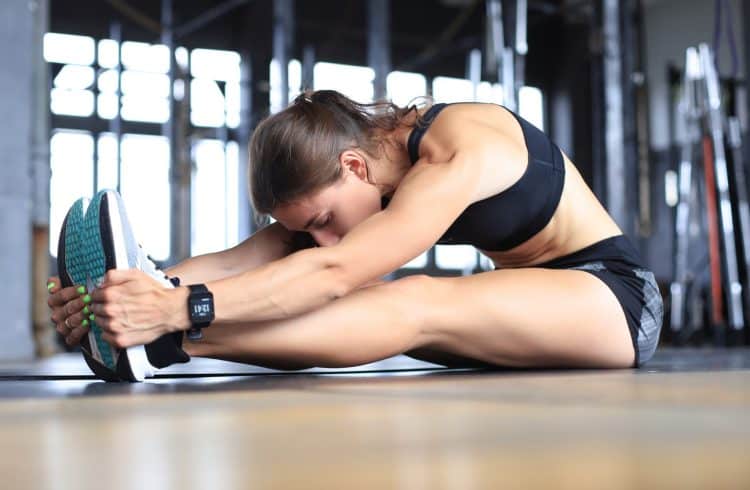
Improve the Quality and Quantity of Your Sleep
Sleep is an underrated part of recovery. Yet, it is the period when the vast majority of the muscle recovery process occurs.
When you get 7-8 hours of quality sleep each night, your body can go to work to repair and rebuild muscle tissue that has been broken down during your workout. It can do this more effectively because it doesn’t have to carry out the myriad of other daytime functions it is called upon to perform.
During deep sleep, two vital muscle-building hormones are released at maximum levels. These two hormones – testosterone and growth hormone – will greatly boost the muscle repair process.
For the effects of sleep to provide maximum recovery benefits, you need to stick to a regular night-time schedule that gives you 7-8 hours of sleep each night. Take a slow-release casein protein supplement 30 minutes before bed to provide your muscles with the required nutrients for cell repair.
Stay Hydrated
Your entire body performs better when you drink water. You will be able to absorb nutrients more quickly and effectively, which will help you get crucial amino acids into the muscle cell more quickly.
Aim to drink half a gallon (around 2 liters) of water daily.
Nutrition for Female Muscle Growth
What you eat is the most important factor for adding muscle to your body. Food provides the nutrients that fuel your muscle cells and the building blocks to create new muscles. All the training in the world will not bring results unless it is supported by sensible, quality nutrition.
Macros
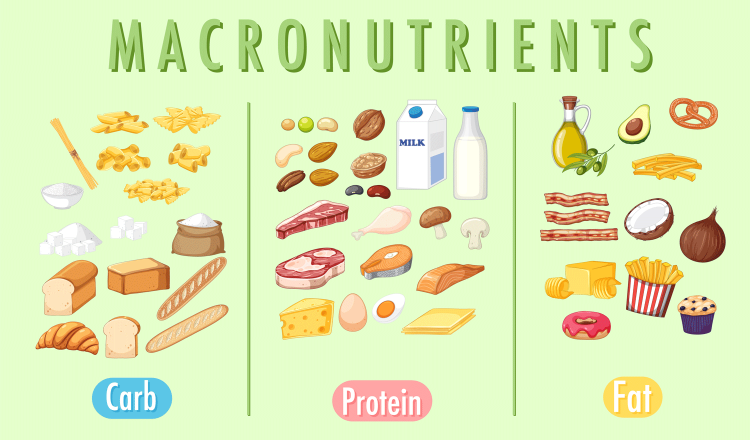
Food has three main, or macro, nutrients — protein, carbohydrates, and fat.
We measure the energy in foods in calories. There are four calories in one gram of protein and carbs and nine calories in one gram of fat.
All three of the macros are needed by the body. When it comes to building muscle, however, the most important macro is protein. Proteins are made up of amino acids, which are the building blocks of muscle tissue. Carbohydrates are also important as they provide the energy to fuel you through your workouts.
We suggest the following macronutrient ratio:
- 50% carbs
- 30% protein
- 20% fat
Focus on lean protein sources:
In terms of carbohydrates, concentrate on green leafy vegetables, starches such as sweet potatoes and yams, rolled oats as well as fruits like bananas and apples.
Supplements for Female Muscle Growth
Working out places a lot of stress on the body. To meet those demands and undertake the needed bodily repair and recovery, you need more nutrients than sedentary people. Even when you are following a healthy, balanced diet, there are several nutrients you probably won’t get in sufficient quantity to meet your body’s needs. That’s where supplements come in.
Here are seven proven muscle-building supplements that you should consider:
1. Beta-Alanine
During your workout, when insulin levels are high, beta-alanine rushes into the muscle fiber, where it combines with the amino acid histidine to form carnosine. Carnosine helps buffer the acidity level inside muscle fibers so they can contract with more strength for longer periods.
Research shows that supplementing with beta-alanine increases muscle strength, power, and endurance. [1]
Ideal dosage for females: 2-4 g
2. Creatine
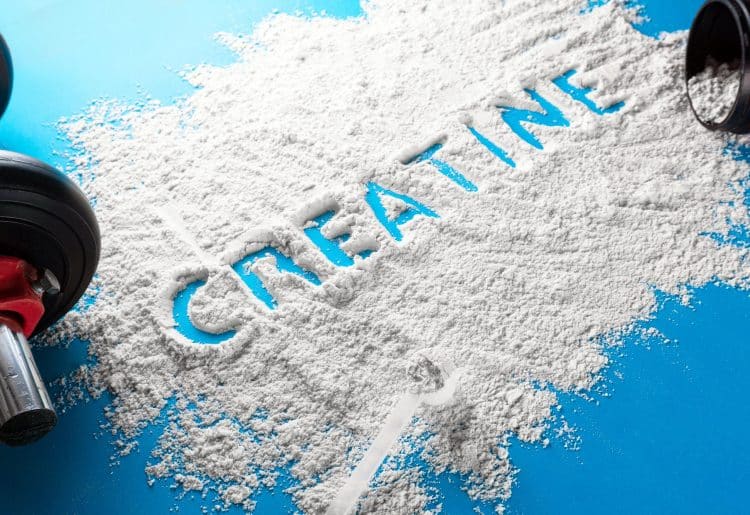
Several studies have shown that creatine can improve power and strength when combined with resistance training. It delivers the extra phosphocreatine your body needs to restore its ATP (adenosine triphosphate) stores. ATP is the body’s main energy source. Yet, after around 10 seconds of intense exercise, your body will exhaust its ATP supplies. Creatine will provide the boost you need to complete those last couple of muscle-stimulating reps. [2]
Many people choose to take their creatine separately from their pre-workout.
3. Tyrosine
The amino acid tyrosine has been clinically proven to increase training endurance without any jittery side effects. It also improves stamina and focus. The body uses it as a precursor to the key neurotransmitters epinephrine and dopamine. [3]
Ideal dosage for females: 1-3 g
4. B Vitamins
The B-complex vitamins, especially B6 (pyridoxine) and B12 (cobalamin), are vital for the body’s energy-producing process. Their main job is to convert food into energy. Other B-complex vitamins to look out for are thiamine (B1), riboflavin (B2), niacin (B3), and folate (B9). [4]
Ideal dosage for females: B6 (50-100 mg); B12 (50-400) mcg [micrograms]
5. Caffeine

We all know that caffeine is a powerful central nervous system booster. However, the voluminous research on the world’s most popular stimulant has also been shown to be a powerful strength and muscle builder and a blunter of muscle pain. Look for the anhydrous form of caffeine, which has been shown to be the most effective. Be sure to stay under the maximum recommended dosage to avoid a dramatic energy crash and jittery reaction. [5]
6. Citrulline
The body takes citrulline and converts it into arginine. It then becomes nitric oxide (NO). To achieve a pump in the gym, you need to boost your NO levels. NO is a vasodilator that expands the blood vessels to allow more blood to surge into the muscle.
Taking citrulline before arginine will boost the body’s blood levels of arginine. Arginine taken directly will see a lot of it taken up by the intestines. [6]
Ideal dosage for females: 3-6 g
7. Arginine
Arginine converts directly to nitric oxide in the bloodstream. To get as much arginine as possible, look for alternatives to L–arginine as arginine-AKG or arginine-HCL. [7]
Ideal dosage for females: 3-5 g
6 Myths About Women & Weights — Busted!
Weight training has come a long way in the last few decades. Years ago, even men were told that lifting weights would make them slow and muscle-bound; that athletes would lose their edge; and that, really, there was very little benefit to the whole thing.
Today, we know that none of those things are true! But when it comes to women and weights, many myths still prevent women from getting the figures they want in the gym.
It’s time to set the record straight once and for all with six of the most common misconceptions about women, weight training, and muscle.
1. Weight Training Will Make Women Look Masculine
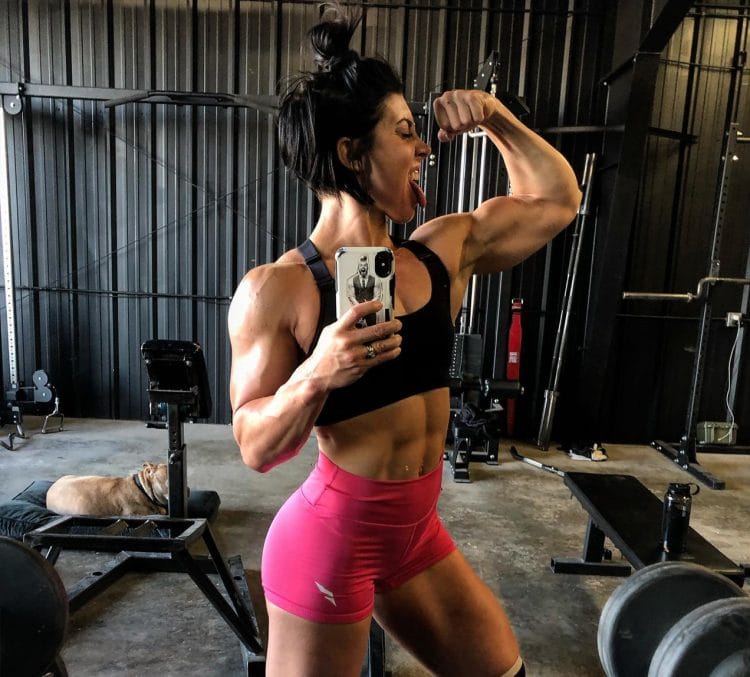
Let’s get this right from the outset: women will never develop the muscles of a man unless they take a whole lot of artificial testosterone (i.e., steroids). Women simply do not have enough of it naturally. Testosterone, the main driver of muscle growth, is a male hormone, meaning women have between 90 and 95 percent less of it than a guy.
The result of lower testosterone levels is that women will have to work very hard and with a lot of determined focus to add every pound of muscle to their bodies. They won’t get bulky by accident!
The great thing about weight training is that it is a tool that allows you to shape your body the way you want. If you want to achieve a slightly bulkier body like Dana Linn Bailey, you can do that. However, if your goal is to end up with a lean, athletic body like three-time Bikini Olympia champion Ashley Kaltwasser, then you can do that, too!
2. Women Should Train Differently From Men
Of course, there are some major anatomical differences between men and women. When it comes to our skeletal muscles, however, we are pretty much identical. There are obviously differences in muscle size, and women have more slow-twitch muscle fibers than men. However, men and women have the same muscle insertion and attachment points, and the fibers travel in the same direction. That’s all that counts when it comes to working out with weights.
Take the quadriceps muscles. You have four of them (hence the name). So does every guy. All four of those quad muscles attach and insert in the same places. That means the exercises that will best strengthen and build the quadriceps for you are the same ones that will strengthen and build the quadriceps for a guy.
The same thing goes for every muscle in your body.
Bottom line: The same exercises are needed for women and men to get bigger and stronger muscles.
3. Olympic Lifting is Too Dangerous for Women
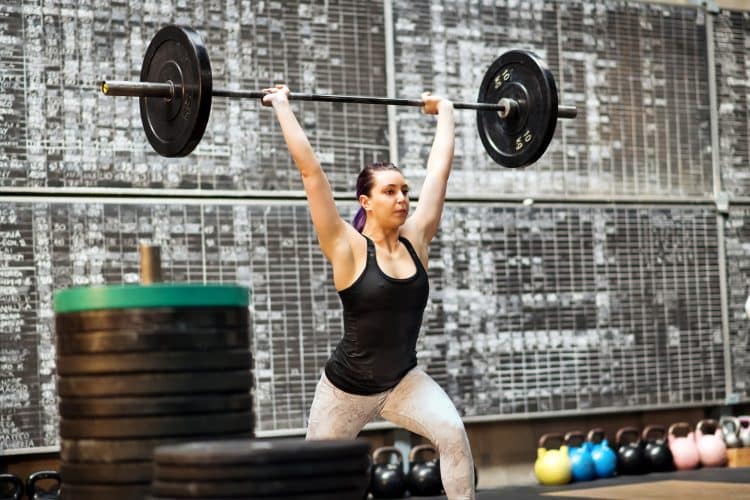
Olympic lifting mainly refers to two specific lifts;
There are several variations of these two moves, which are done in the gym. They are all functional compound movements that will make you get strong fast. They will also help you burn off body fat and improve your muscular and cardiovascular endurance.
Olympic lifting can be dangerous, but so can running on the treadmill. So long as you learn the proper technique, warm up properly every time, and progressively increase your resistance, you will benefit immensely by adding Olympic lifts to your routine. Start with just an unloaded bar and go from there.
4. Women Should Use Light Weights & High Reps to Get Toned
There’s no such thing as ‘toning’ a muscle. There is only making it stronger, bigger, and more defined. As we have already discovered, working on your nutrition is key to getting defined muscles. Calorie-burning exercises like full-body compound strength training workouts will also help remove body fat and enhance your muscular definition.
Light weights are beneficial as part of a complete weight training program. Your body has two types of muscle fiber: fast twitch and slow twitch. Doing high reps (as high as 50 reps) and low reps (as low as 6 reps) will help you develop all of your muscle fibers. But concentrating on high reps in the belief that it will get your muscles more defined is a myth that needs to be buried once and for all!
5. Stick to the Treadmill to Get Lean
Getting lean includes:
- Stripping off body fat
- Developing muscle

When it comes to removing fat from your body, 75 percent of your results depend on what you put in your mouth. To lose fat, you must create a caloric deficit, which requires eating fewer calories daily than your body burns.
You also need to expend more energy throughout the day. The best form of exercise to do that is debatable, but one thing is certain: weight training helps remove fat while strengthening and building muscle. Walking, or even running, on the treadmill will not build muscle.
A smart training plan will combine strength training with a high-intensity form of cardio training called HIIT — exactly like you’ll find in my FitQueen Challenges.
6. Older Women Should Avoid the Weight Room
Nothing could be further from the truth!
A plethora of research over the last few years is establishing strength training as the most important thing people over 50 can do to turn back the signs of aging. In the past, the few seniors who discovered the benefits of strength training in these studies did so as part of their rehab program after an injury or accident. We now know that proactively beginning a strength training program in your 40s or 50s can help prevent accidents or injuries from occurring in the first place.
Studies conducted over the past decade have shown that regular strength training can significantly reduce the symptoms of the following age-related conditions:
- Arthritis
- Poor balance
- Diabetes
- Osteoporosis
- Obesity
- Back pain
- Breathing problems
- Depression
- Dementia
In addition to making you far less likely to suffer from these and other health conditions, strength training will make you more functional in your everyday tasks.
And don’t think that just because you’re in your 60s or 70s, you need to stick to the baby weights. Your muscles, joints, and bones will respond just as well to heavy weights as those of a 20-year-old!
Wrap Up
The days of women working out with pretty pink weights to ‘tone’ their bodies are over. Today’s woman wants an athletic, muscular, lean physique, and she knows that she’s got to get serious in the gym to get it.
In this article, we’ve discovered that you have to train just as hard and heavy as the guys to build muscle. We’ve also seen that what you eat matters. Focus on lean proteins, complex carbs, and the key supplements we identified. Train consistently, eat smartly, and focus on recovery and you will steadily add the lean muscle that you desire.
References
- Derave W, Ozdemir MS, Harris RC, Pottier A, Reyngoudt H, Koppo K, Wise JA, Achten E. beta-Alanine supplementation augments muscle carnosine content and attenuates fatigue during repeated isokinetic contraction bouts in trained sprinters. J Appl Physiol (1985). 2007 Nov;103(5):1736-43. doi: 10.1152/japplphysiol.00397.2007. Epub 2007 Aug 9. PMID: 17690198.
- Cooper R, Naclerio F, Allgrove J, Jimenez A. Creatine supplementation with specific view to exercise/sports performance: an update. J Int Soc Sports Nutr. 2012 Jul 20;9(1):33. doi: 10.1186/1550-2783-9-33. PMID: 22817979; PMCID: PMC3407788.
- Ipson BR, Green RA, Wilson JT, Watson JN, Faull KF, Fisher AL. Tyrosine aminotransferase is involved in the oxidative stress response by metabolizing meta-tyrosine in Caenorhabditis elegans. J Biol Chem. 2019 Jun 14;294(24):9536-9554. doi: 10.1074/jbc.RA118.004426. Epub 2019 May 1. PMID: 31043480; PMCID: PMC6579467.
- Kennedy DO. B Vitamins and the Brain: Mechanisms, Dose and Efficacy–A Review. Nutrients. 2016 Jan 27;8(2):68. doi: 10.3390/nu8020068. PMID: 26828517; PMCID: PMC4772032.
- Fisone G, Borgkvist A, Usiello A. Caffeine as a psychomotor stimulant: mechanism of action. Cell Mol Life Sci. 2004 Apr;61(7-8):857-72. doi: 10.1007/s00018-003-3269-3. PMID: 15095008.
- National Center for Biotechnology Information (2023). PubChem Compound Summary for CID 9750, Citrulline. Retrieved May 14, 2023.
- McConell GK. Effects of L-arginine supplementation on exercise metabolism. Curr Opin Clin Nutr Metab Care. 2007 Jan;10(1):46-51. doi: 10.1097/MCO.0b013e32801162fa. PMID: 17143054.
